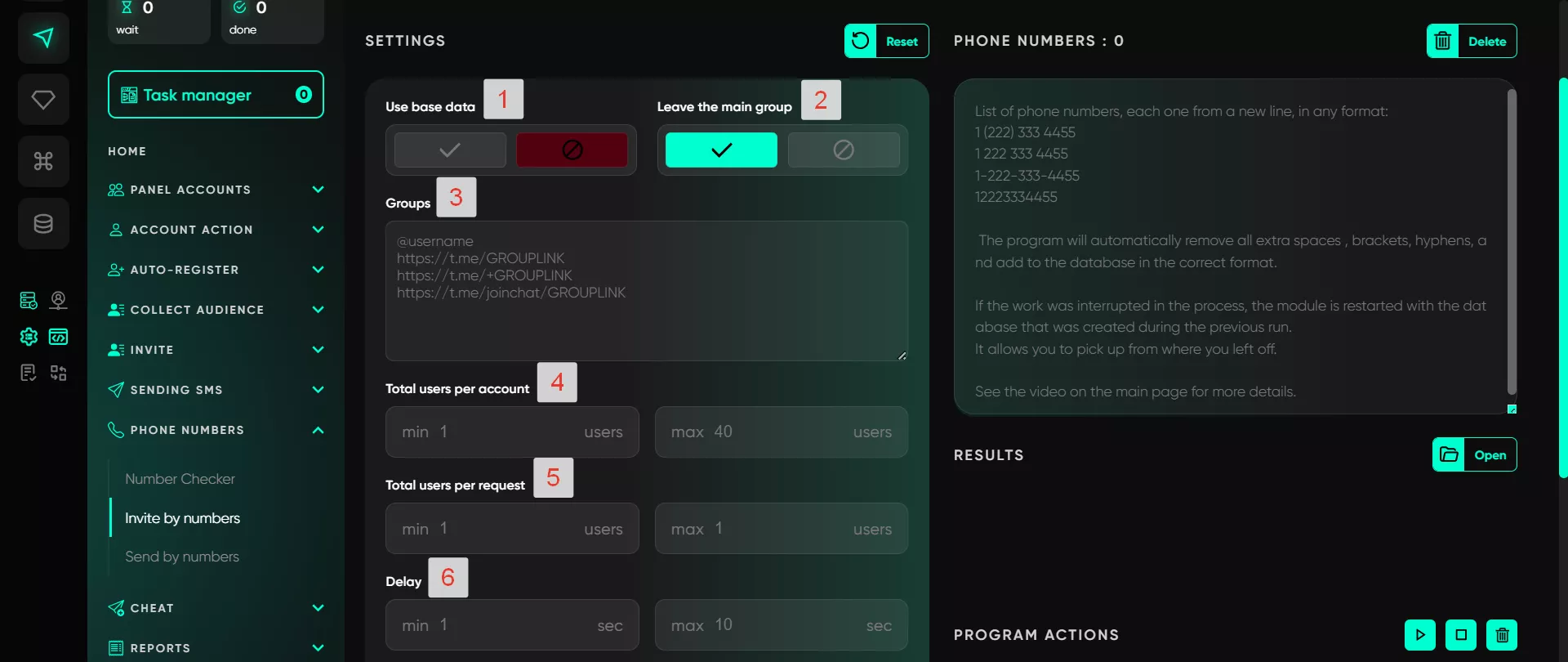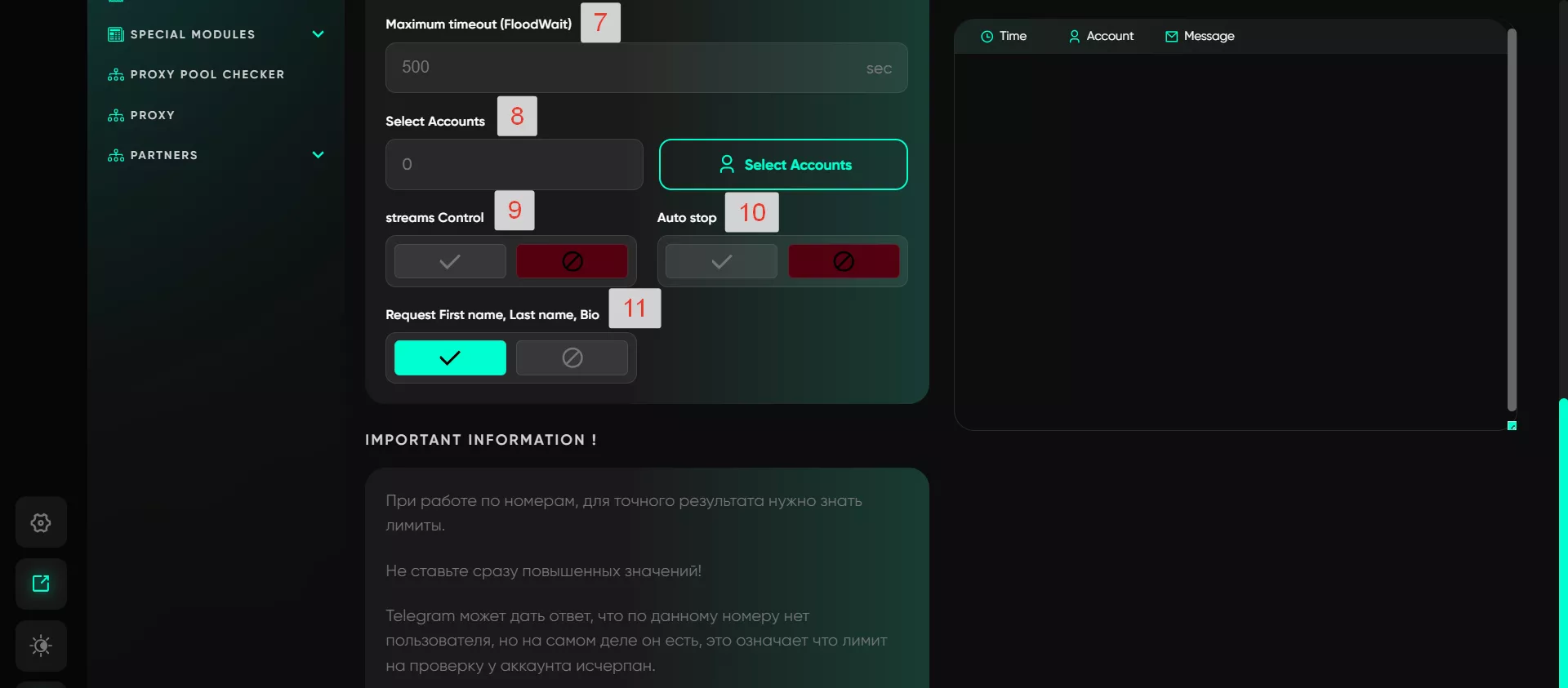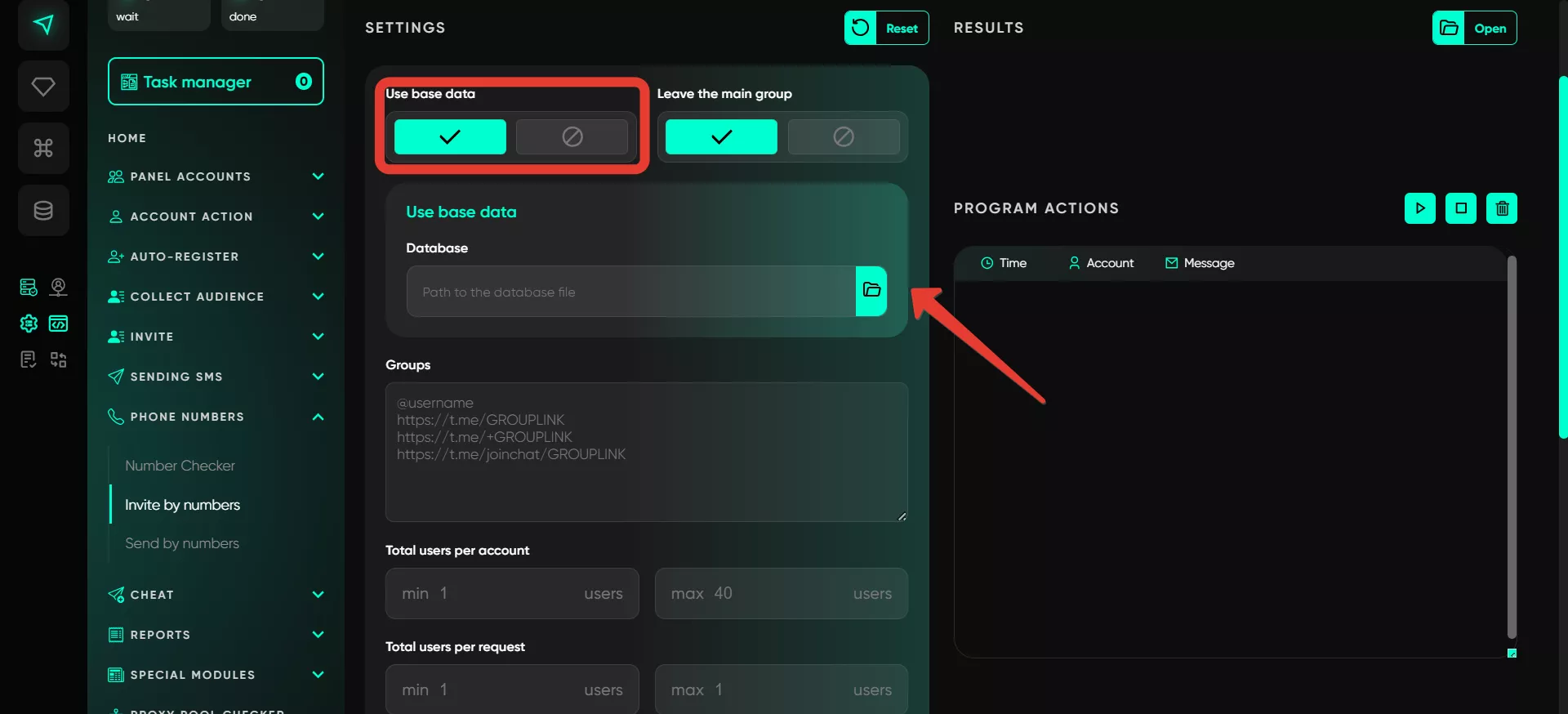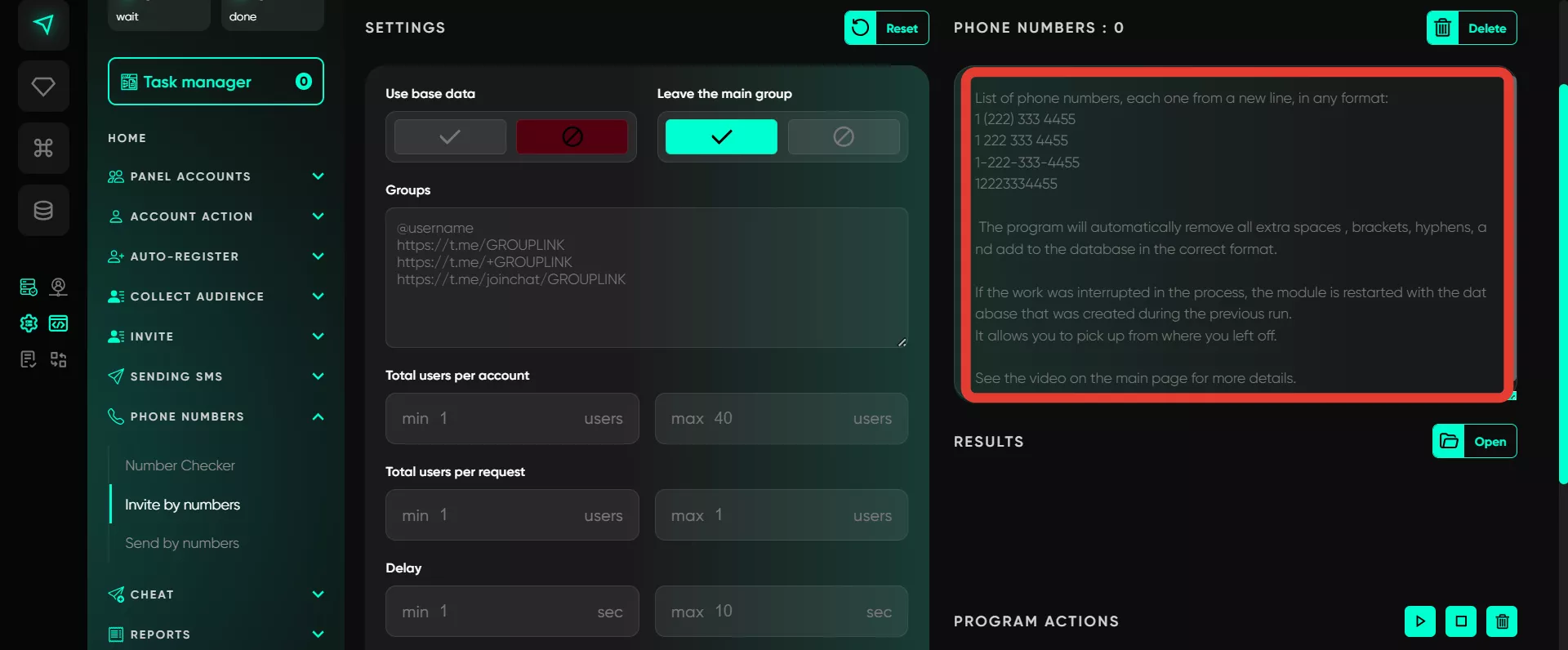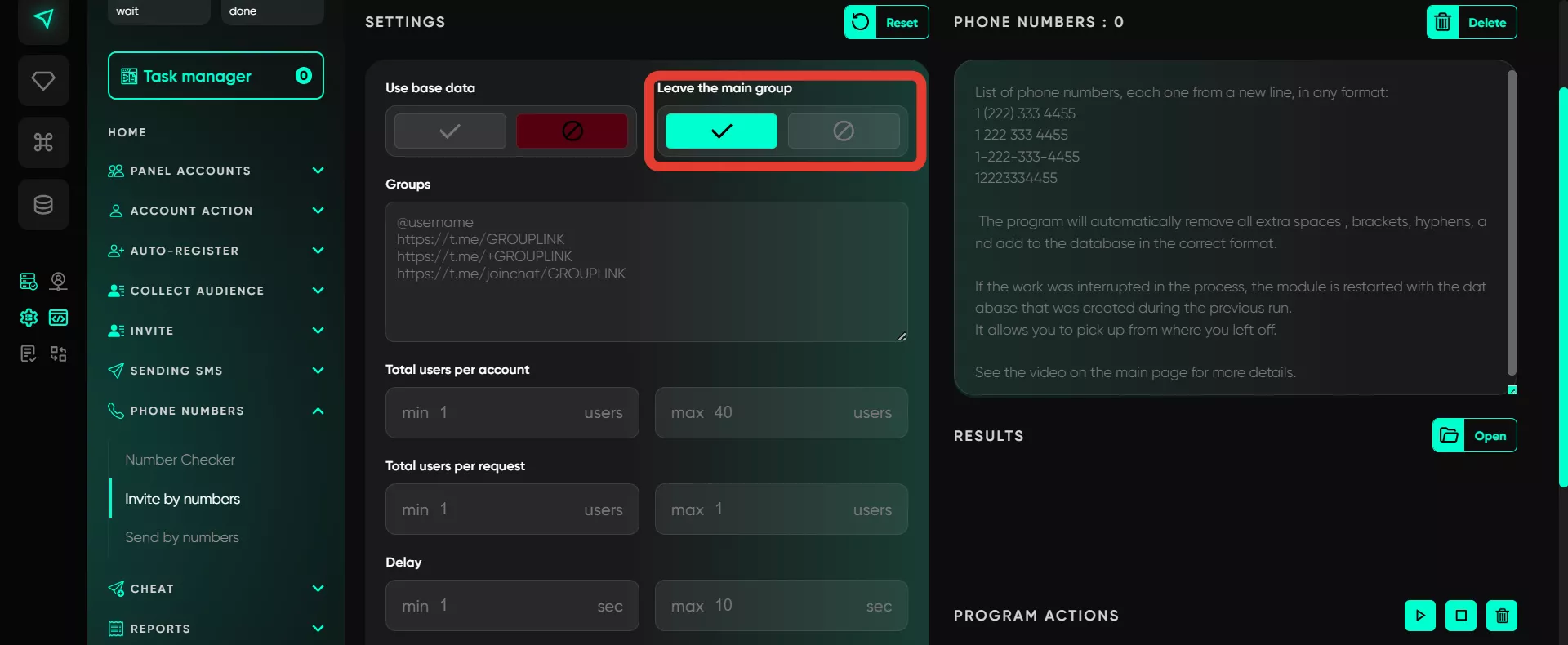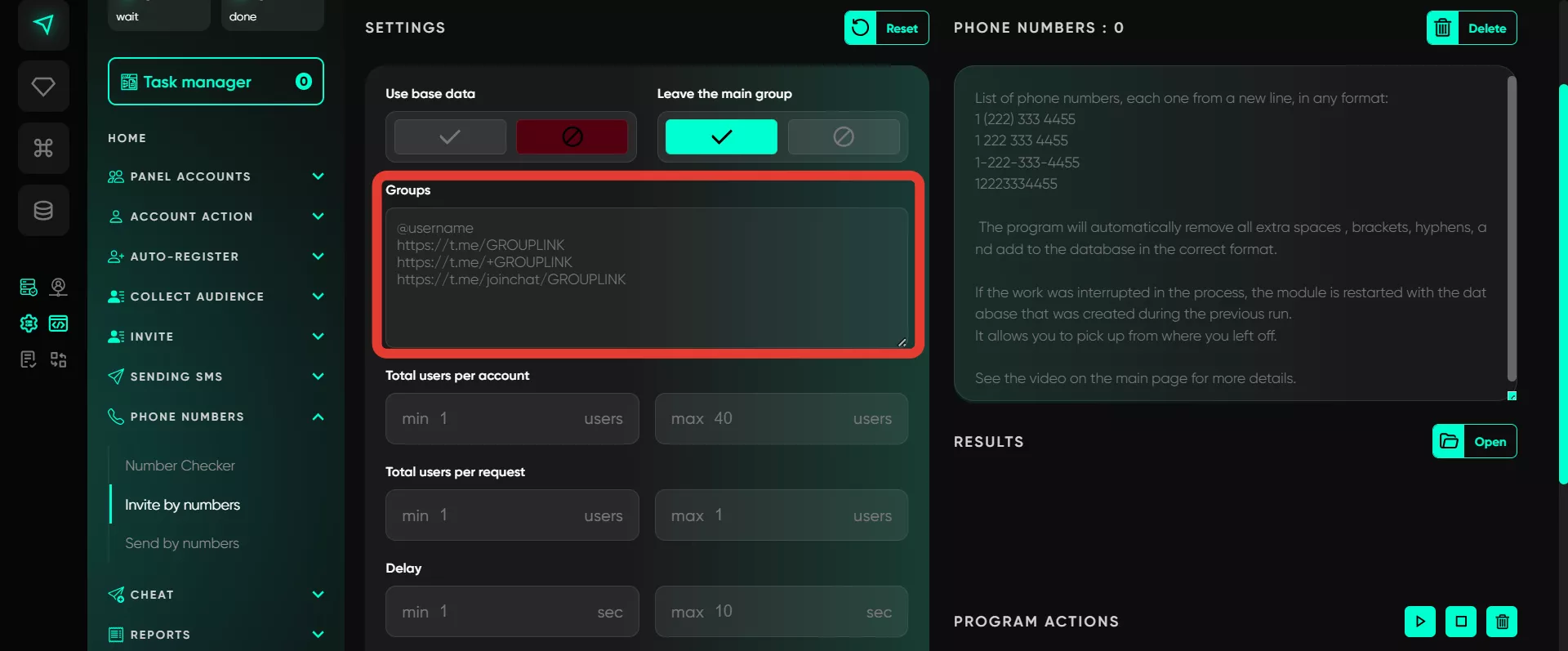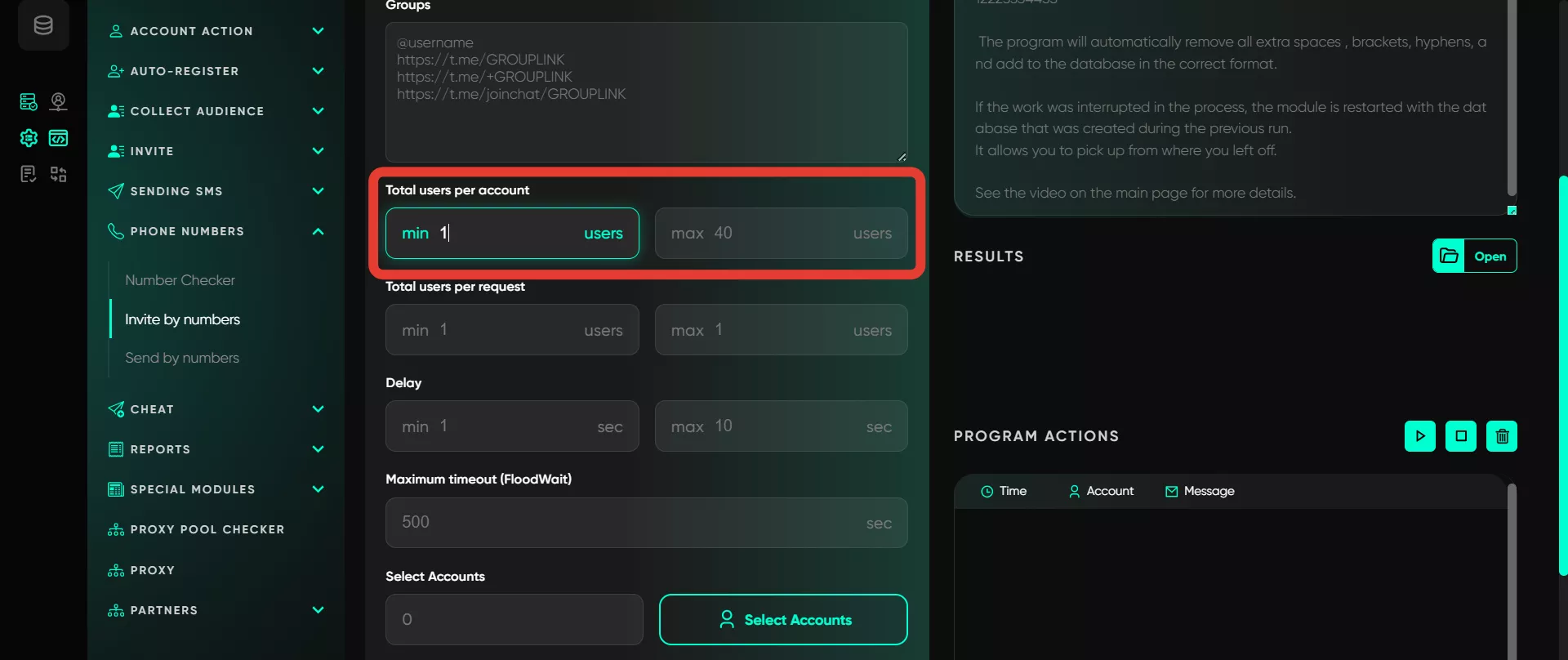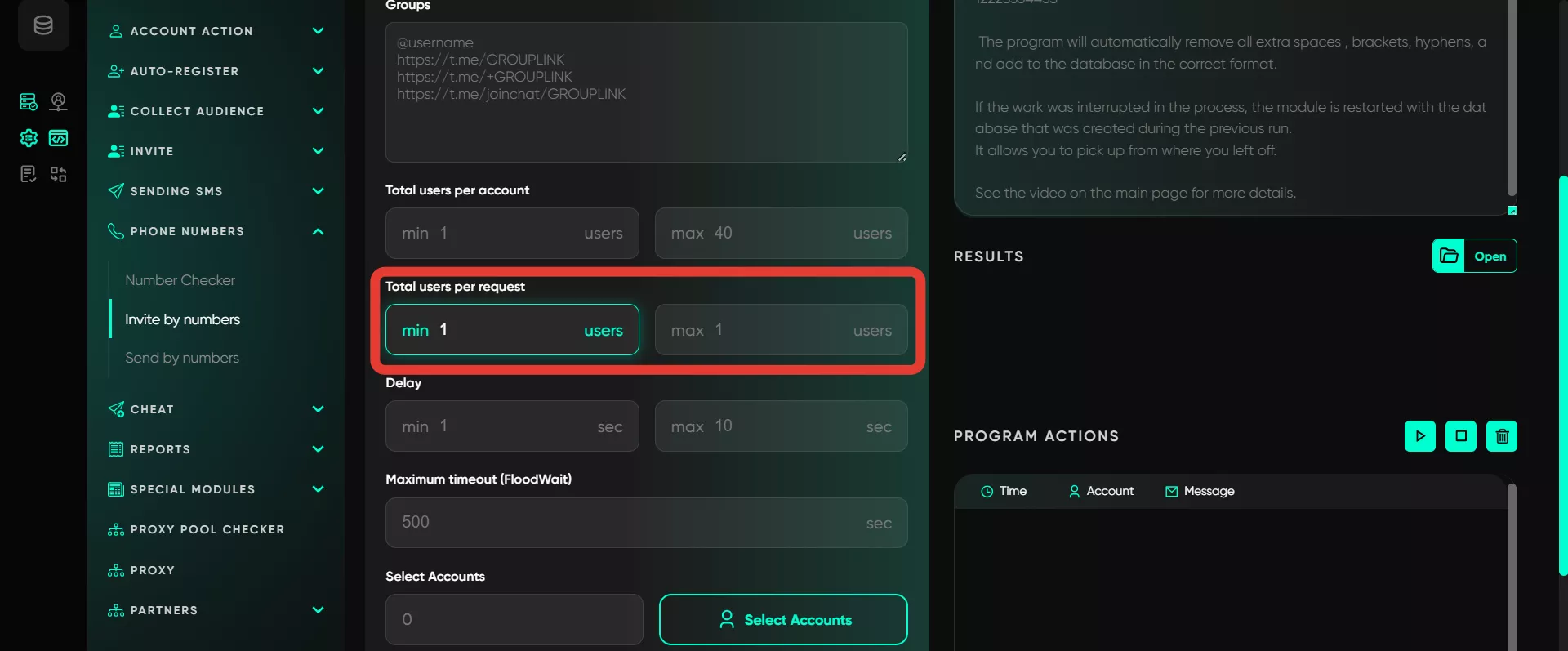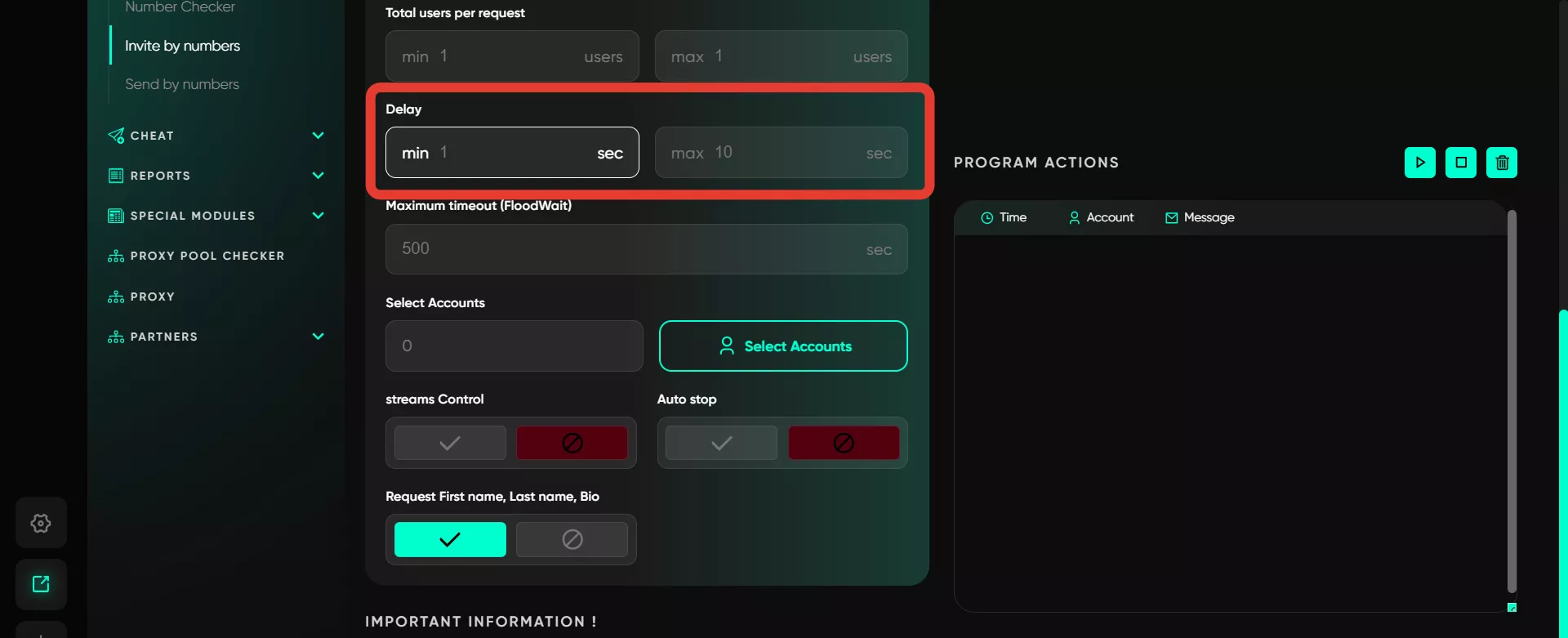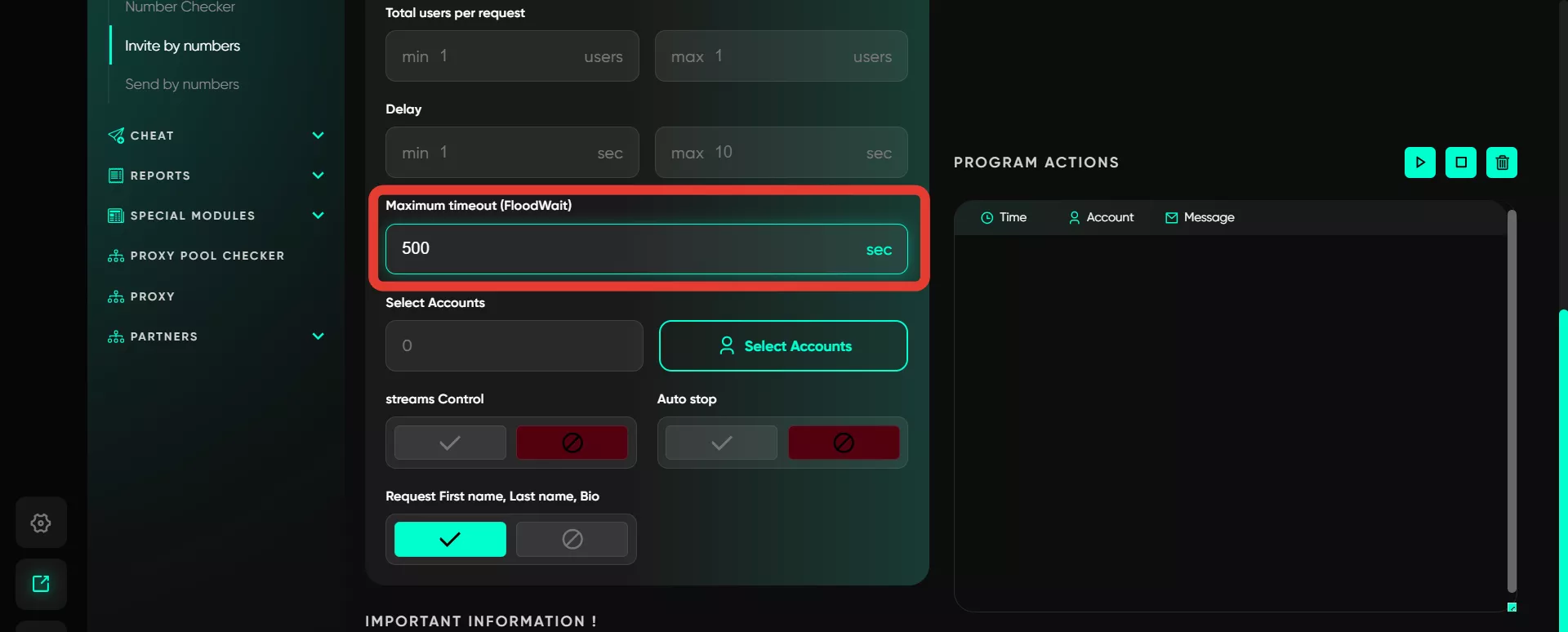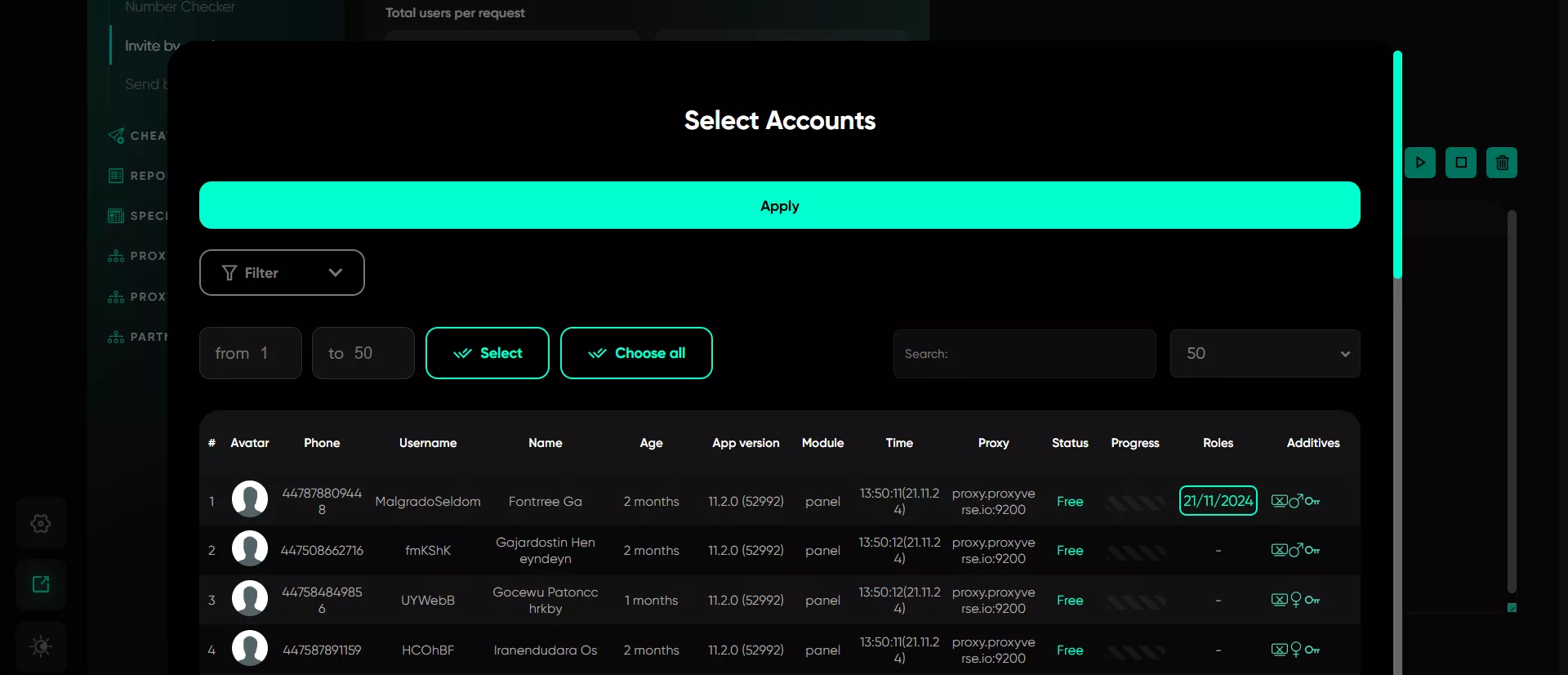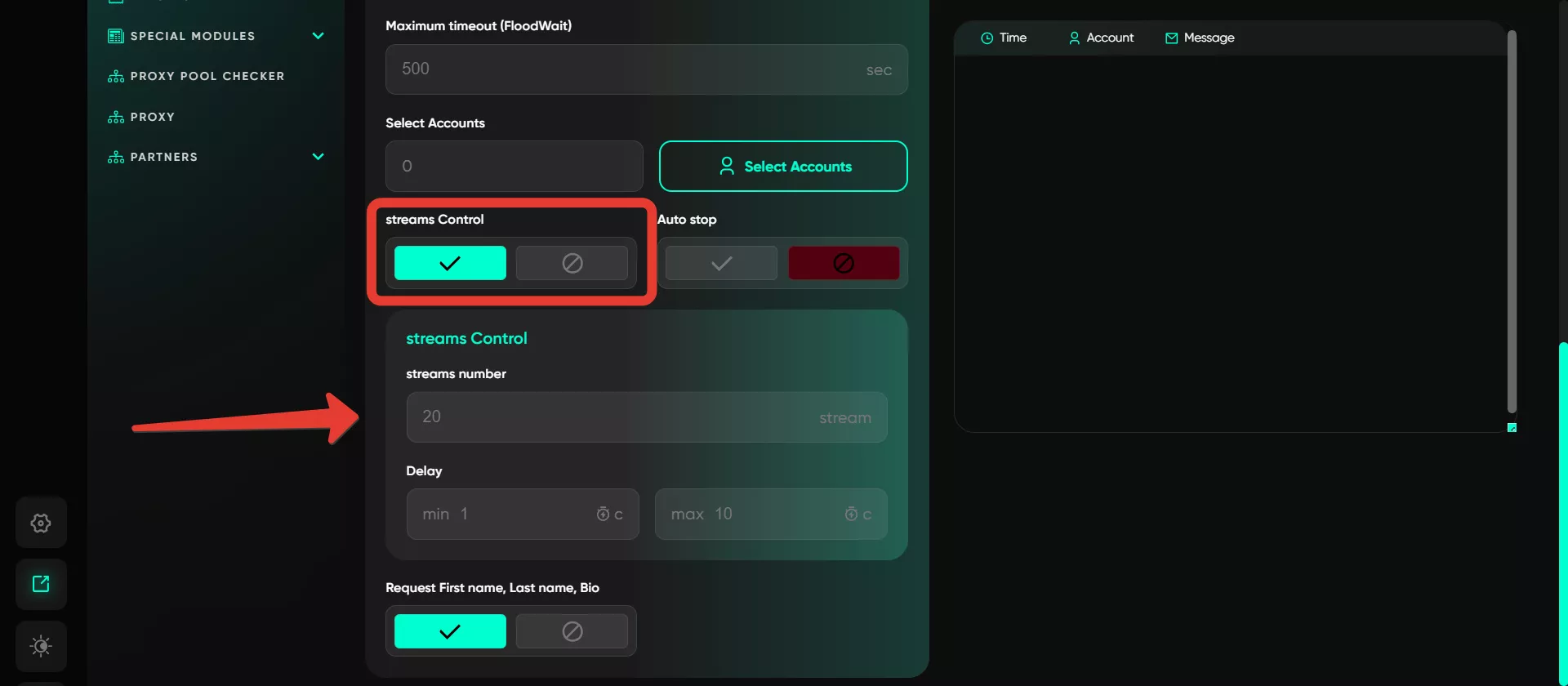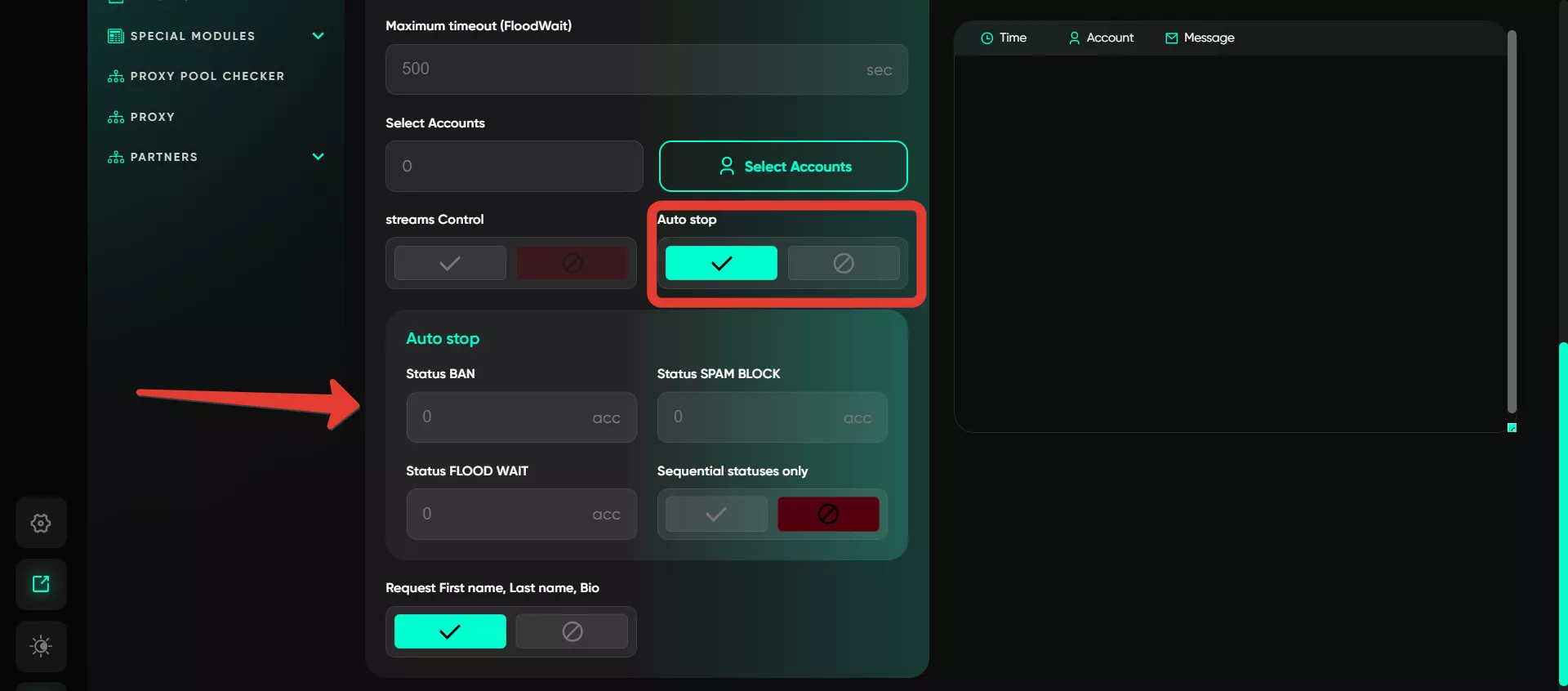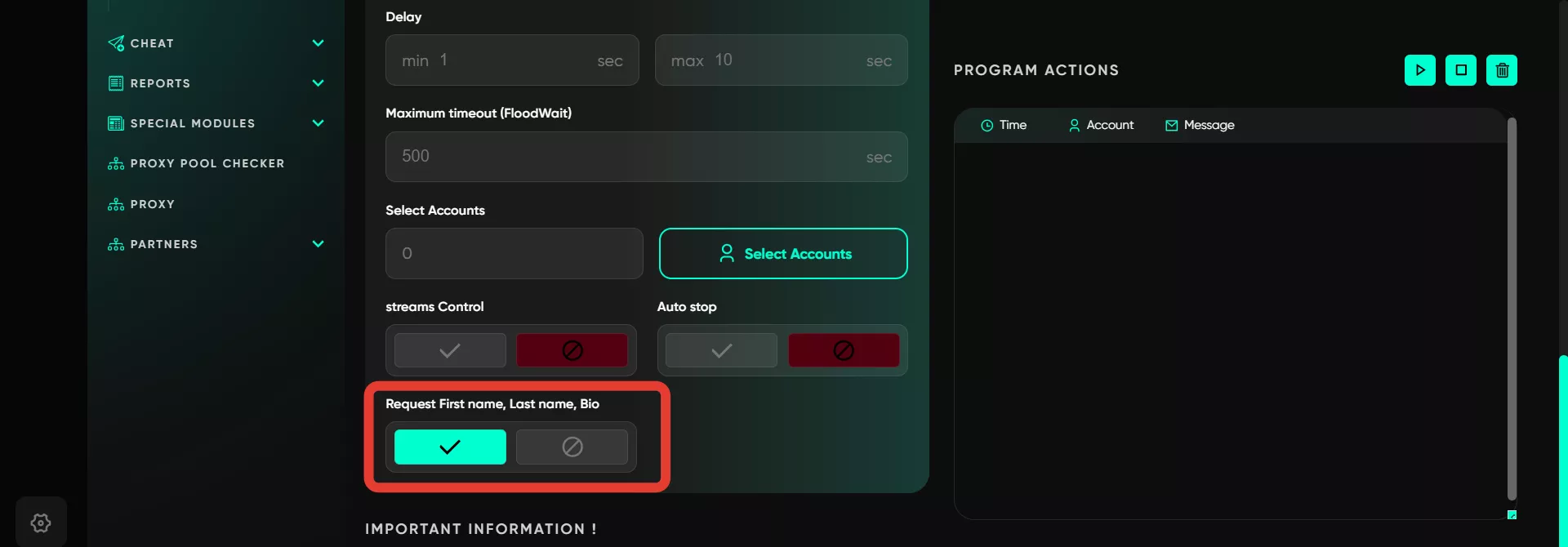Invite by numbers
This section allows inviting users based on phone contact lists. The tool works similarly to inviting by usernames and IDs, but in this case, a database of phone numbers is required. For example, if you have a list of 20,000 numbers, it is recommended to verify them before inviting. This will help determine which contacts are active, registered on Telegram, and when they were last online. Based on the verification results, you will get a filtered database, allowing you to focus on active users.
To work with this section, you need a prepared database of phone numbers. Manual input is also possible: simply enter the numbers in the right-hand field, one number per line. Pay attention to the format: the program automatically removes spaces, dashes, and other symbols, but it does not change the country code for Russian numbers from 8 to 7. Keep this in mind when uploading your database.
The limits for working with phone numbers (inviting) are the same as for verification. Avoid setting values that are too high, as this may result in errors indicating that numbers could not be found. The maximum is up to 20 invites per day per account.
Main functions and settings:
Use a database
You can upload a pre-prepared database of phone numbers for further inviting in Telegram.
If there is no database, the program allows manual input of numbers, one per line. It is essential to ensure the database is up to date since Telegram checks the activity of numbers to filter inactive contacts.
Leave the main group
After completing the invitations, the account can automatically leave the group it invited participants to. This helps avoid unnecessary subscriptions.
Groups
Enter links to groups or their usernames where invitations will be sent. If the group is private, provide an invitation link. This function allows you to target specific groups, improving the quality of the audience.
Total users per account
Specify how many contacts will be processed by one account per session. It is recommended to set a limit of 20 numbers to avoid blocking.
Total users per request
Defines how many numbers are included in one request. To avoid overload, it is better to set one contact per request, reducing the risk of blocks.
Delay
By setting a delay between requests, for example, 1 to 10 seconds, you can create the appearance of natural activity, lowering the risk of blocks. The program randomly selects a delay within the specified range.
Maximum timeout (FloodWait)
This setting allows specifying a timeout for flood restrictions. If the restriction lasts longer than the specified time, the account’s operation will pause; if shorter, the account will wait and then resume the task.
Select accounts
Specify the accounts that will be used for inviting by phone numbers. Users can select only profiles from the «Active» folder, so ensure all necessary accounts are added to it in advance.
Streams control
In multi-threaded mode, you can set the number of threads — the number of accounts working simultaneously. For example, with 20 threads, 20 accounts will be active. Intervals between requests are adjusted for even load distribution. For instance, setting a delay of 40–60 seconds ensures that once one account completes its task, the system automatically selects the next account to work, but only after waiting for the specified delay (randomly chosen within the range).
Auto stop
A setting to stop inviting when certain statuses occur: Spamblock, FloodWait, or BAN. For example, if you set the value to 1 for each status, the module will stop working when one account receives any of these statuses. This option prevents mass blocking when working with large databases.
Request First Name, Last Name, and Bio
During inviting, you can enable data collection about users: their first name, last name, and bio. These details will appear in the final database if provided in the profile.
Before starting mass inviting, it is recommended to test the request limits. For instance, if only 5 out of 20 loaded numbers are active, consider adjusting the account settings, reducing limits, or increasing delays. Remember, the invite limits are the same as number verification limits: about 15–20 requests per account per day.
It is best to start with minimal settings to avoid errors. Use quality accounts with high activity levels and longevity, as well as reliable proxies. Proper settings and quality proxies (such as residential or mobile proxies) can help avoid blocks.
